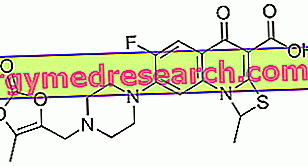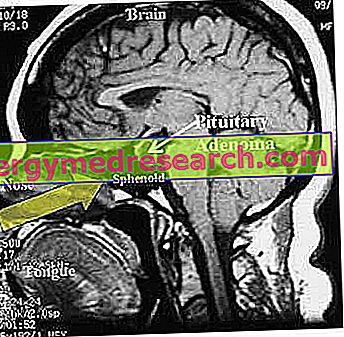
Generality
The acronym FANS identifies a wide and very used category of medicines; we are talking about Non-Steroidal Anti-Inflammatory Drugs, of which NSAIDs are the acronym.
As the name suggests, these drugs are able to reduce numerous inflammatory processes in the body, and do not have the typical steroid structure of cortisone and derivatives (commonly called cortisone).
Despite having different chemical structures and belonging to separate chemical classes, NSAIDs represent a rather homogeneous group of drugs with regard to the therapeutic effects induced by their administration; in fact, in addition to acting as an anti-inflammatory, NSAIDs perform analgesic and antipyretic activity, which means they fight pain and fever .
History
The history of Non-Steroidal Anti-Inflammatory Drugs begins more than 300 years ago, around 1760, when priest Edward Stone documented the clinical utility of willow bark in the treatment of 50 patients suffering from fever and intermittent disorders. In reality, human beings had known the healing properties of willow bark for many years, to the point that in the Middle Ages they were widely exploited in the treatment of febrile states associated with malaria, a widespread disease at the time.

Over the years, people continued to use the bark of the willow to treat the different feverish states, as long as - with the advancement of science and the refinement of scientific methods - many years later, in 1829, the salicylic glycoside was isolated (called salicina). A few years later chemists discovered that the active ingredient capable of combating febrile states was salicylic acid, which however had a terrible taste and irritated the oral and gastric mucosa. For this reason, several researchers worked to modify the structure of salicylic acid leaving its healing properties intact; thus obtained acetylsalicylic acid, which gave better results but still contained many impurities.


Action mechanism
NSAIDs have different therapeutic properties, such as analgesic, antipyretic and anti-inflammatory; in fact they reduce the pain associated with inflammation, lower body temperature in case of fever and reduce the symptoms of inflammation.
During the process of inflammation, starting from the phospholipids of cell membranes, the so-called mediators of inflammation are produced; through a complicated biochemical process, with the initial intervention of an enzyme called phospholipase (inhibited by corticosteroid drugs) arachidonic acid is produced, which is then converted by lipooxygenases (LOX) into leukotrienes and by cyclooxygenases (COX) into prostaglandin H2 (a precursor of all prostaglandins, chemical substances responsible for the control of numerous physiological and pathological processes), prostacyclines and thromboxanes. All these mediators of the inflammatory process are called autacoids, and play a fundamental role in activating the inflammatory process itself.
NSAIDs exert their analgesic and anti-inflammatory effects essentially through the inhibition of the enzyme cyclooxygenase (COX), which allows the transformation of arachidonic acid into prostaglandins or prostanoids (PG) and thromboxanes. Under normal conditions, PGs play an important role in ensuring the integrity of the gastric mucosa, normal renal circulation and efficient platelet function.
The cyclooxygenase enzyme has two different isoforms, called COX-1 and COX-2, the first of which regulates prostaglandin synthesis under normal physiological conditions, while COX-2 is produced especially when the inflammatory response is triggered and only in the tissues in which an inflammation occurs.

Side effects
The COX-inhibitory effect of traditional Non-Steroidal Anti-inflammatory Drugs, which manifests itself through the inhibition of both forms of the cyclooxygenase enzyme, in addition to the suppression of inflammation and pain, necessarily produces also a series of undesirable effects on the mechanisms of protection of gastric mucosa.
Prostaglandins, in fact, are essential in the process of periodic reduction of acid secretion, stimulate the production of mucus and bicarbonates, and promote the flow of blood to the gastric mucosa, thus guaranteeing its integrity.
In addition to this systemic harmful action, correlated to the inhibition of prostaglandin synthesis, NSAIDs have a local harmful action, which is attributed to their ability to favor the penetration of hydrochloric acid into the stomach wall favoring corrosion of gastric mucosa. For more information, read about the side effects of NSAIDs.
Because they are used
Non-Steroidal Anti-Inflammatory Drugs are among the most widely used drugs, NSAIDs are used all over the globe, from young and old, mainly as self-medication, thus also representing the most commercialized drug class.
They are in fact used in the treatment of rheumatic and non-rheumatic diseases. such as rheumatoid arthritis and osteoarthritis, in various other pathologies that manifest themselves with febrile states, and generally in all those pathological manifestations of the musculoskeletal system sustained by the presence of inflammatory phenomena.
Therapeutic classification
NSAIDs include:
- Drugs with anti-inflammatory properties
- NSAIDs reduce the components of inflammation and the immune response in which prostaglandins play a significant role: vasodilation, edema, pain. The anti-inflammatory effect is clinically shown later than the analgesic one.
NSAIDs have no action on other aspects of inflammation, such as leukocyte migration, the release of lysosomal enzymes, the production of toxic oxygen radicals.
- NSAIDs reduce the components of inflammation and the immune response in which prostaglandins play a significant role: vasodilation, edema, pain. The anti-inflammatory effect is clinically shown later than the analgesic one.
- Drugs with analgesic properties
- NSAIDs reduce the synthesis of prostaglandins that sensitize the receptors to the action of inflammatory mediators (bradykinin), particularly in those inflammatory with local increase in prostaglandin synthesis: bursitis, muscle pain, odontalgia, dysmenorrhea.
The effect on migraine could be due to antagonism towards prostaglandin-induced vasodilation. Evidence shows an action at the central level of the Fans, particularly at the level of the spinal cord.
- NSAIDs reduce the synthesis of prostaglandins that sensitize the receptors to the action of inflammatory mediators (bradykinin), particularly in those inflammatory with local increase in prostaglandin synthesis: bursitis, muscle pain, odontalgia, dysmenorrhea.
- Drugs with antipyretic properties
- through the inhibition of the synthesis and release of PGE2 in the? hypothalamus. During the inflammatory reaction the release of a pyrogenic cytokine, IL-1, is stimulated. It stimulates the production of PGE2 which determines an increase in body temperature.
- Drugs with antiplatelet properties
- through the inhibition of the synthesis of thromboxane at the platelet level; the anti-aggregating action is a particular characteristic of acetylsalicylic acid, which - thanks to the keratolytic action - is also used topically to treat calluses, calluses, epidermophytosis (eruption caused by fungi);
Therapeutic uses
NSAIDs are generally indicated for the symptomatic treatment of the following conditions
- Rheumatoid arthritis
- Inflammatory arthropathies (eg ankylosing spondylitis, psoriatic arthritis, Reiter's syndrome)
- Osteoarthritis (also known as osteoarthritis)
- Renal colic
- Dysmenorrhea (menstrual pain)
- Mild to moderate pain due to inflammatory processes and tissue lesions
- Metastatic bone pain
- Post-operative pain
- Fever, Pyrexia
- Acute Gout
- Pathological ileus (intestinal obstruction)
- Toothache
- Headache and Migraine
- They are also administered to newborns whose ductus arteriosus does not close within 24 hours of birth
- As the only NSAID capable of irreversibly inhibiting COX-1, aspirin is indicated for the inhibition of platelet aggregation; at low doses (eg CARDIOASPIRIN ®) it is therefore used in the prevention of arterial thrombosis and associated cardiovascular events. Aspirin inhibits platelet aggregation by inhibiting the action of thromboxane A2.
Furthermore, NSAIDs are also used as analgesic drugs; they are therefore prescribed to relieve painful states of mild or medium intensity, especially when the pain sensation is associated with the presence of inflammatory processes. Non-Steroidal Anti-Inflammatory Drugs are capable of calming the various types of pain, such as muscle pain, those resulting from minor surgical procedures such as tooth extractions, menstrual pain and the different types of pain resulting from headaches.



